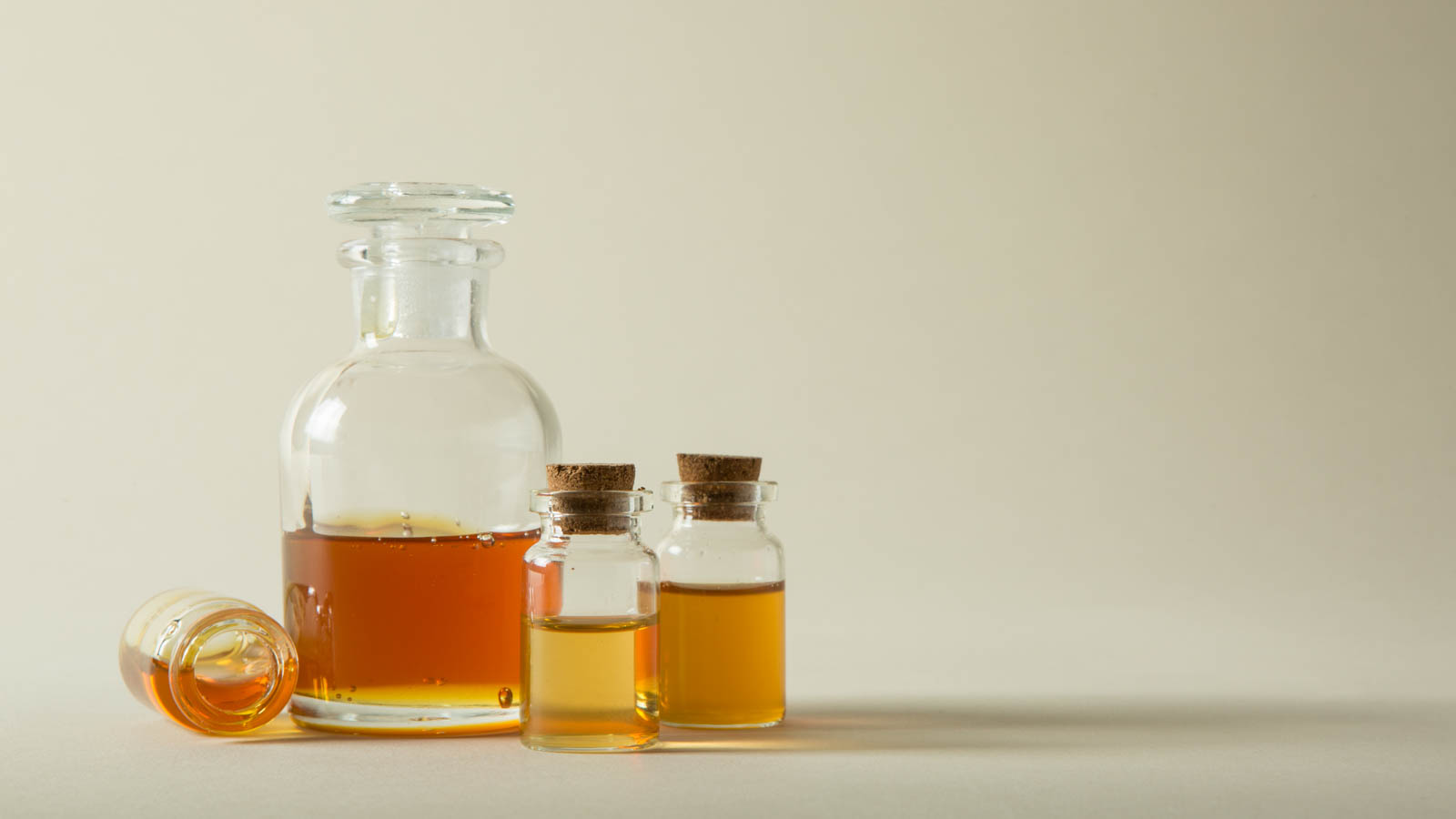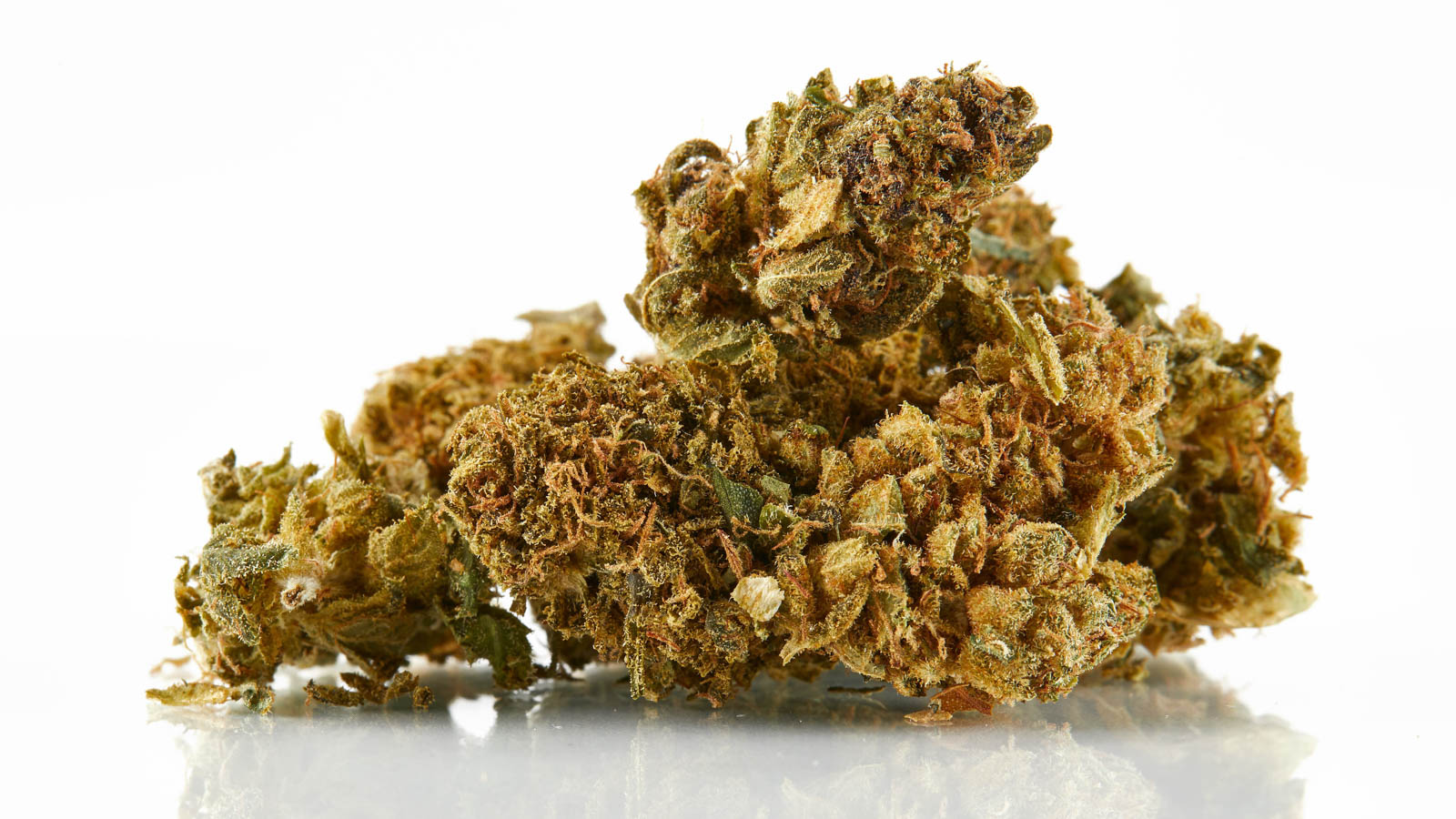Looking to make your own cannabis oil? You've come to the right place. With a few tips and tricks, preparing homemade cannabis oil can be a fairly simple and highly rewarding process.
Keep reading for an overview of cannabis oil below or skip ahead for step-by-step instructions for making your own cannabis cooking oil at home.
Great weed oil starts with great weed. Find some on the Weedmaps app.
What is cannabis oil?

Image lightbox

Cannabis oil is a refined extract made when the active ingredients in cannabis — cannabinoids, terpenes, flavonoids, etc. — are infused into a carrier oil, like coconut or olive oil. Psychoactive cannabinoids in cannabis, such as THC and CBD, are lipophilic, meaning they are fat-soluble and have a high affinity for the fats in oils. When consumed with fat, our bodies more readily absorb and digest potent cannabinoids, initiating a uniquely elevating and potentially therapeutic experience.
Infused oil can be made with hemp, just cannabis, or a combination of both, taking on the cannabinoid and terpene profile of the starting material. Compared to inhalation, the effects of consuming cannabis oil will take longer to set in but will provide a longer-lasting experience as well. Onset can take one to three hours depending on your metabolism and physiology that day, and the effects typically last around eight hours.
How to use cannabis oil

Image lightbox

Cannabis oil is extremely versatile. Once made, it can be used to prepare homemade edibles, medicated meals, infused beverages, and topical salves, and it can always be consumed on its own. And, fortunately, most infused oils can be stored and used for weeks to months.
Here are a few easy ways you can use cannabis oil:
- Prepare homemade edibles and medicated meals. Make edibles or prepare a delicious dish with your cannabis cooking oil. A popular alternative to cannabutter, weed oil is one of the most reliable methods of making edibles. In fact, cannabis cooking oil can be used in lieu of butter or oil in nearly any recipe — it's up to you how creative you want to get with it. Tip: When cooking or baking with infused oil, try to avoid recipes that require high temperatures or lengthy heating times since both can degrade the terpenes and cannabinoids in the oil. You want to avoid further decarboxylating the cannabinoids, which could impact potency.
- Make an infused beverage. Just as you can eat weed oil, you can drink it, too. Add a dose of cannabis coconut oil to a coffee, tea, or smoothie.
- Make your own topical salve. Combine your weed oil with beeswax or similar ingredients to make a soothing cannabis topical or self-care product. You can also apply the oil directly onto your skin. Topicals can potentially be used to help combat skin irritation, general inflammation, muscle and joint soreness, and more.
- Enjoy weed oil on its own. Cannabis oil can be ingested or administered sublingually, meaning under the tongue, completely on its own, like a tincture. Many tinctures are simply cannabis-infused oils, after all. Depending on the carrier oil you use, the consistency of the final product will determine the best way to dose it on its own. For instance, some oils maintain a more solid texture and can be ingested by the spoonful or spread on toast, while others remain in liquid forms and may be administered in drops. Keep in mind sublingual dosing offers a potentially quicker onset and shorter duration of effects.
How to make homemade cannabis oil: Step-by-step instructions
Making homemade cannabis oil can be easy with the right approach. Before you begin, think about what kind of oil you'd like to use.
Choosing an oil
When it comes to selecting a carrier oil, there are a variety of popular options:
- Canola
- Vegetable
- Olive
- Peanut
- Sesame
- Coconut
- Avocado
- Sunflower
The oil you choose heavily depends on what you need it for: topical, sublingual, or cooking purposes. If you want to use it while you cook, consider the dishes you plan on cooking, the temperature at which you're cooking, flavor and consistency preferences, individual dietary needs, and potential storage options.
Coconut and olive are the most commonly used carrier oils, as they are versatile, pleasantly flavored, and nourishing, as well as antifungal and antimicrobial, preventing mold growth and extending the shelf life of the oil.
Materials you'll need
Here's what you'll need to get started:
- 7 - 10 grams, or about one-eighth of an ounce, ground cannabis flower
- Baking sheet
- Parchment paper
- Foil
- 1 cup carrier oil of your choice
- Double-boiler or a saucepan and heatproof bowl
- Probe or candy thermometer (optional but highly recommended)
- Mesh strainer or cheesecloth
- Medium-sized bowl
- Spatula
- Storage container (preferably dark glass)
How to make cannabis oil
Time needed: 3 hours
The 1:1 ratio of ground cannabis to carrier oil is often recommended, but it's highly customizable. Adjust measurements based on your tolerance and preference. If you're new to cannabis edibles and ingestion, you may want to start with an even smaller ratio. Speaking of dosing, it's best to sit down and do a little math so you know exactly how much THC, CBD, or other cannabinoids will be in your final oil.
- Decarb your flower.
The first step in making homemade cannabis oil is decarboxylating, or “decarbing," your ground flower. Decarboxylation is a chemical process that converts the acidic form of cannabinoids naturally produced by the plants (THCA, CBDA, etc.) into the neutral form we associate with the intoxicating or mildly psychoactive experience we all know and love (THC, CBD, etc). Decarboxylation can be thought of as “activating" cannabinoids before infusing them into the carrier oil. Start by preheating your oven to 240°F. Next, spread your ground cannabis evenly onto a baking sheet lined with parchment paper. Cover the sheet with a piece of foil. Place the baking sheet onto the center rack and bake for 30-40 minutes, rotating the sheet after 20 minutes for even heating. For cultivars high in CBD, it's recommended to leave it in the oven closer for 50 - 60 minutes since CBD does not decarb as quickly as THC does. Once the time is up, allow your weed to cool at room temperature. It should appear slightly darker in color. Note that this process will smell. It's best to open up a window or turn on a vent or fan while decarboxylating your cannabis if a strong weed smell is a concern.
- Prepare a double broiler.
Combine the decarboxylated cannabis with carrier oil in a double boiler or makeshift double boiler, like a heatproof bowl and a saucepot, for example. Add water to the bottom pan of your double boiler, and add the container with the cannabis and oil to the top.
- Let the weed and oil simmer.
Heat your weed and oil mixture on low for at least 60 minutes and up to six hours, stirring regularly. It is generally recommended to ensure the infusion's temperature does not exceed 200°F. Shoot for around 180°F, or ideally anywhere between 160°F - 200°F works. Monitor the oil's temperature with a probe or candy thermometer for best results. Stir occasionally and replenish the water as needed.
- Strain the oil.
Once the oil has cooled to room temperature, strain the oil using a mesh strainer and cheesecloth or paper coffee filter over a glass bowl. If using cheesecloth you can wrap up and squeeze the flower to extract more oil, or you can use a plastic spatula to push down on the flower in a strainer. Afterward, discard the plant material.
- Store and label your weed oil properly.
Store your cannabis oil in an airtight, glass container in a cool, dark place. Label and date your oil's storage container clearly. If you've done the math in figuring out the oil's cannabinoid content, you can include this information on the label and break it down by cup, tablespoon, and teaspoon for easy reference. Avoid exposing cannabis oil to light, air, and heat to preserve its potency for as long as possible. You can store your infused oil at room temperature for at least two to three months and longer in your fridge. It's often recommended that cannabis oil be used within six months to one year, although if stored properly, it can retain potency for even longer. The potency will naturally decrease over time, but as long as it is properly stored and no mold is present, your cannabis oil is safe to consume. Of course, always keep infused oil out of reach of children and pets.
Bottom line
There, you have it — everything you need to get started on making your own cannabis oil at home. Just remember that when it comes to ingesting cannabis, start low and go slow when dosing. And, don't forget to have fun with it.





